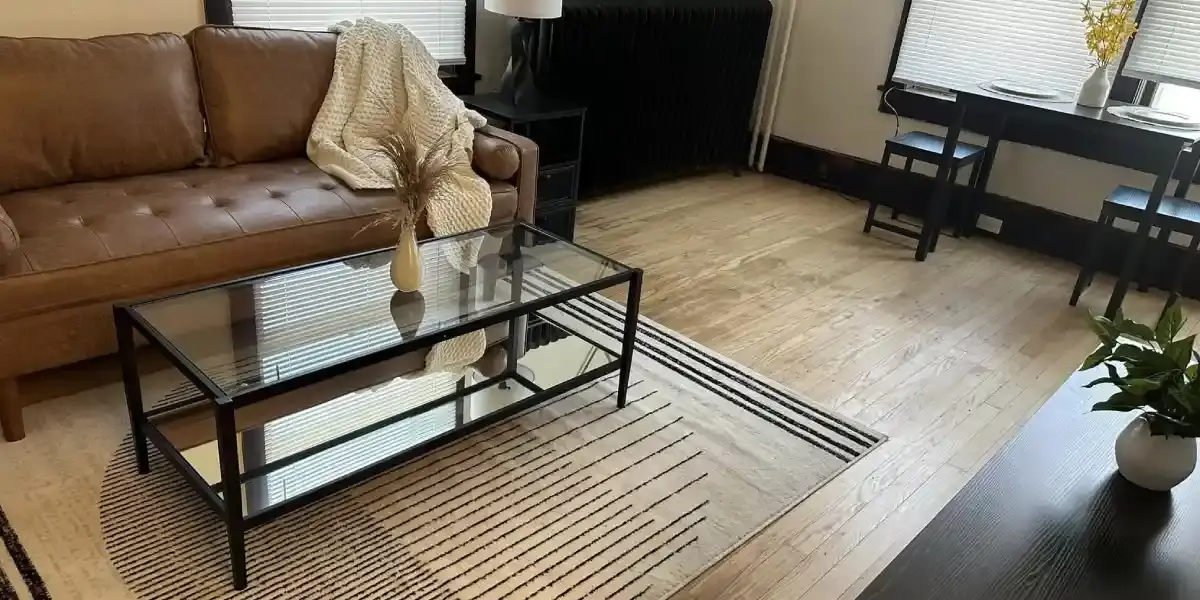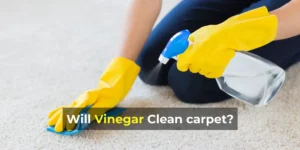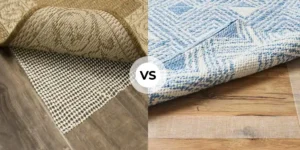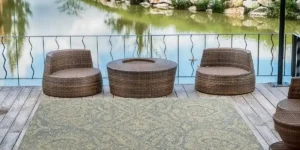Vinyl floors are a combination of stability and stylish flooring.
Because they are perfect for high-traffic areas and are budget-friendly. Plus, being easy to install and won’t need much maintenance.
Yet, sometimes vinyl flooring needs protection from dirt, debris, and potential scratches.
For which we mostly use floor mats or carpets.
As it helps preserve the floor’s finish, reduces wear, and enhances longevity. Also, it prevents abrasive particles from being tracked onto the surface.
However, the vinyl floor’s smooth surface can sometimes make it a challenge to keep the floor mat in place. Mats constantly need to be repositioned, which is dangerous and disrupts your aesthetic.
So, here the question comes up: How to keep floor mats sliding on vinyl floors?
In this article, we’ll explore effective ways to keep floor mats from sliding on vinyl floors. Plus, it ensures a safer and more stable living environment.
How to Keep Floor Mats Sliding On Vinyl Floor? (7 Best Ways)
1. Non-Slip Backing
When buying a mat, you should choose a non-slip backing designed for smooth surfaces like vinyl. Because this special backing increases traction. And providing a secure grip on the floor.
Also a mats with non-slip features are instrumental in preventing unwanted movement. It ensures stability and safety in areas with vinyl flooring.
2. Use Double-Sided Rug Tape
Grab some double-sided carpet tape and give your mats a quick anti-slip solution. For a strong adhesive connection between the mat and the vinyl floor, evenly spread it across the mat.
Well, so it’s a simple and budget-friendly move. It works wonders, cutting down the chances of those mats going on and rehearsed slide.
3. Invest in Anti-Slip Pads
You should use an anti-slip pad which is designed for mats on vinyl floors. These pads provide an extra layer of grip, preventing unwanted movement.
So, cut them to fit the size of your mats, and enjoy increased stability and safety in your living space. It is a practical solution for securing mats on smooth surfaces.
4. Velcro Strips
Velcro strips can secure mats on vinyl floors effectively. Stick one side to the mat’s back and the matching side to the vinyl surface.
As a result, a sturdy connection that tells slipping to take a back seat. With Velcro, your mats stay in place and add a solid dose of stability to your living space.
5. Apply Silicone Caulk
Apply silicone caulk to the back of your mats in small dots or lines. Once it dries, it becomes your secret weapon against slippage on smooth vinyl.
It’s like magic traction that keeps your mats from sliding. So, this simple solution will keep your mats in check and elevate the safety vibe in your home.
6. Clean Both Surfaces Regularly
Well, you should regularly clean both the vinyl floor and the back of your mats. By doing this, it will maintain its optimal grip and prevent slipping.
Then, dust, debris, or residue can accumulate over time, reducing friction. It’s not just about cleanliness—it’s about creating a safer and more stable environment in your space.
7. Interlocking Floor Mats
Now, consider using interlocking floor mats, especially in high-traffic areas. Because these mats connect, creating a unified and stable surface.
Also, the interlocking design minimizes individual mat movement, preventing sliding on vinyl floors. It’s not just a solution; it’s a practical powerhouse for keeping stability and safety intact in busy spaces.
Reasons Why Floor Mats Slide on Vinyl Floors
- Smooth Surface of Vinyl: As you know, vinyl floors have a smooth, sleek surface that adds a nice touch and makes cleaning them a breeze. But that smoothness means floor mats tend to slip easily.
- Inadequate Backing on Floor Mats: Vinyl floor mats sometimes have ineffective backings that don’t provide enough grip. You should choose mats that are non-slip or have a rubberized backing.
- Dust and Debris Buildup: Over time, dust, debris, and even pet hair can accumulate on both the floor and the back of the mat. As a result of this accumulation, the mat slides on the vinyl floor due to reduced friction.
- Moisture or Residue: If vinyl floors are left with moisture or residue from spills or cleaners, they can become slippery. When floor mats come into contact with these areas, they are more likely to slide.
- Frequent Foot Traffic: Areas with high foot traffic, such as entryways or hallways, are more prone to floor mat movement. The constant foot traffic puts serious pressure on mats, and without the right grip, they may have to move.
Potential Damage Caused by Sliding Mats
#1 Surface Scratching
Well, the back of a sliding floor mat can act like a mild abrasive, causing fine scratches on the vinyl surface.
These scratches can start as subtle marks over time, but they accumulate over time. So, keep an eye out for those mat-induced scratches if you’re aiming for a flawless vinyl vibe!
#2 Wear and Tear on Mat Edges
When your mat turns into a sliding enthusiast, the constant motion can wear down its edges. Over time, this wear and tear gives it a frayed and not-so-cool look. It’s better to keep the sliding adventure if you want that long-lasting aesthetic wonder.
#3 Residue Staining
If the floor mat has a rubberized or non-slip backing that degrades over time. And it may leave a residue on the vinyl floor.
Now, this residue can be challenging to clean and may result in staining or discoloration. So, keeping that backing in top shape is key for a spotless vinyl floor.
#4 Uneven Flooring
The vinyl surface is unevenly pressured when mats slide repeatedly. As a result, the affected areas may develop indents or uneven wear patterns. So, if you want your vinyl to stay smooth and even, it might be time to rein in those sliding mats.
#5 Reduced Longevity of Mats
Mats that are always on the move, getting shuffled around like a deck of cards. That constant displacement is like a fast-forward button for wear and tear.
Constant movement weakens the mat’s material and reduces its lifespan. So, if you want your mat to last, give it a break from constant relocation.
Check Out More Articles Related to Floorings:
- How to Get Yellow Stains Out of Vinyl Flooring? (A Comprehensive Guide)
- How to Get Waves Out of Vinyl Flooring? (4 Best Ways)
- [Solved!] Why Does My Floor Shake When I Walk: 6 Common Causes





